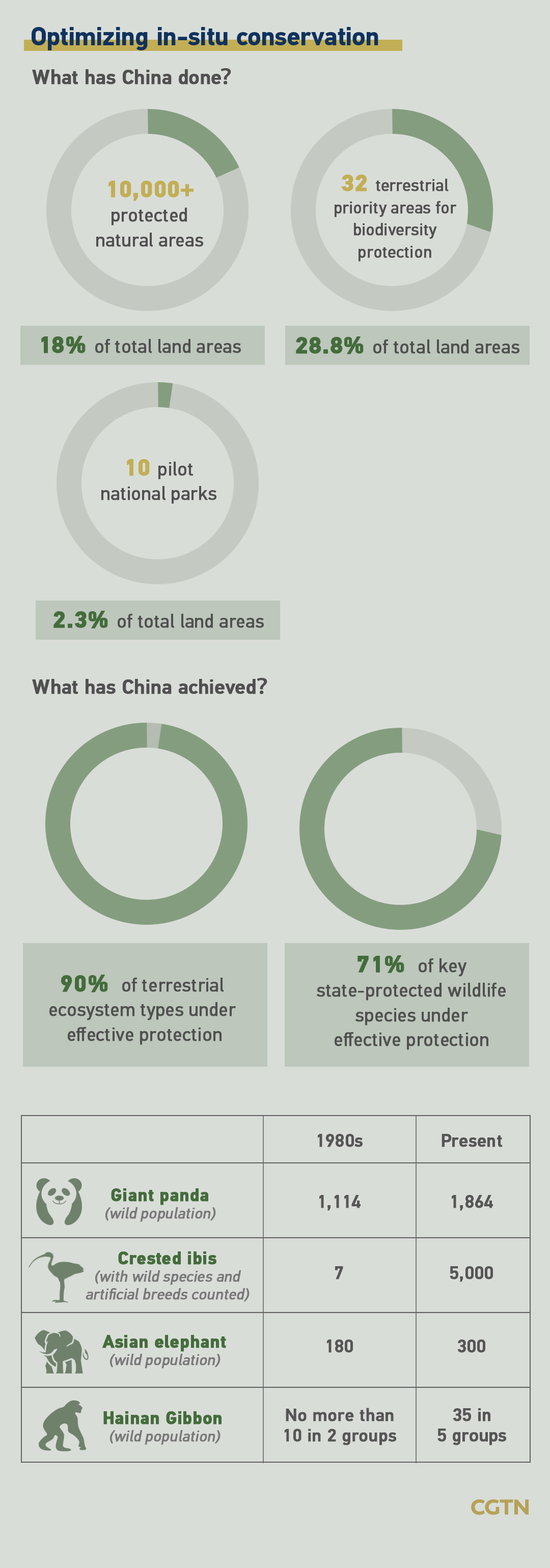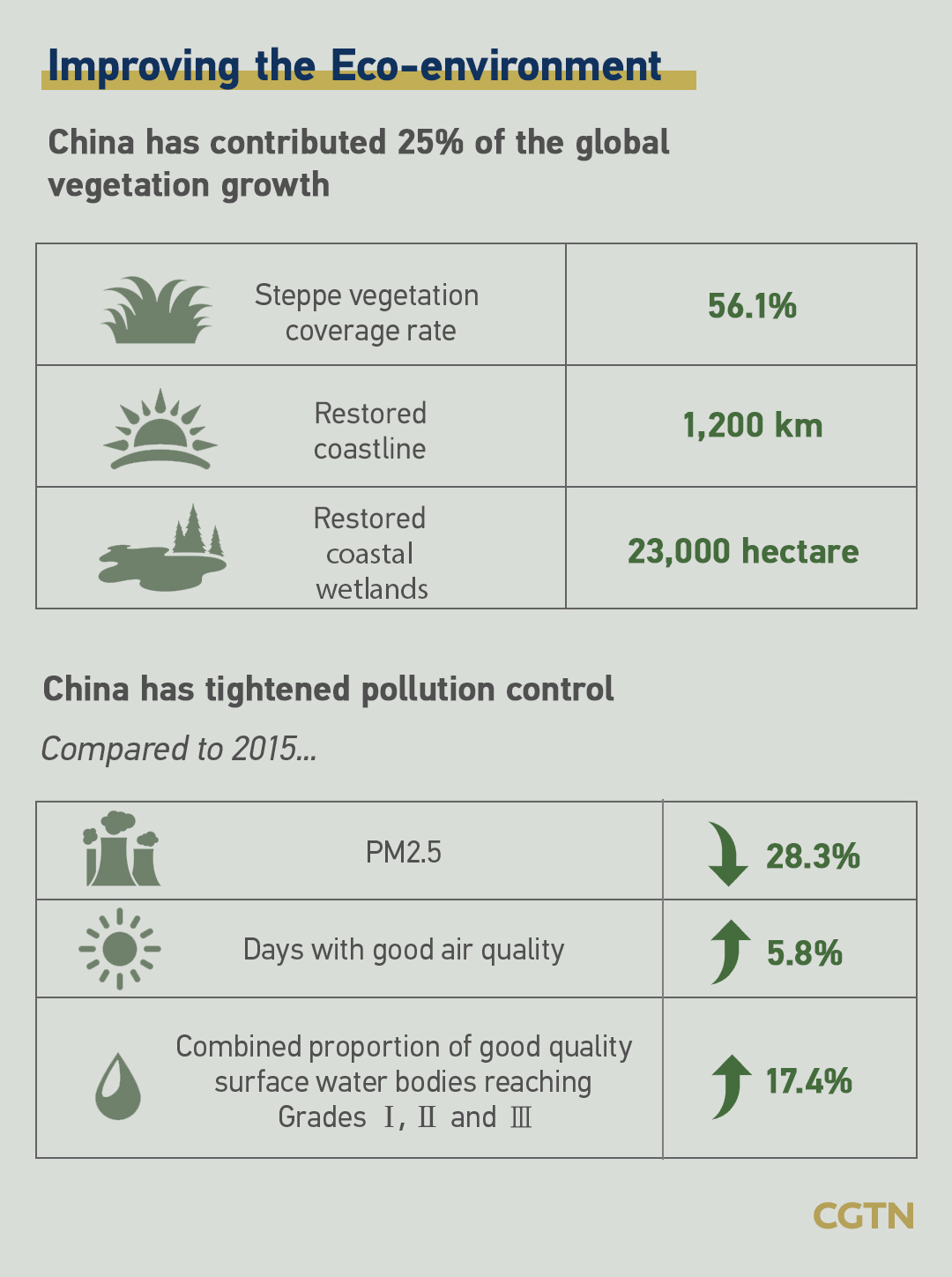China's State Council Information Office released a white paper on biodiversity conservation in China on Friday, days ahead of a key UN meeting in the southwestern Chinese city of Kunming.
China advances biodiversity conservation and development in parallel and takes measures to increase the efficiency of biodiversity conservation, the paper says. Here are some key points:
China is setting up protected areas (PAs) and opening national parks on a trial basis, to create a PA framework with a focus on national parks.
Since 1956 when the first nature reserve was set up, China has established close to 10,000 PAs of all types and at all levels. In recent years, it has built a PA system with national parks as the mainstay, supported by nature reserves and supplemented by nature parks, laying the foundation for protecting natural habitats, improving the eco-environment, and protecting ecological security in the country.

China continues to step up ex-situ conservation, and launches systematic campaigns to save endangered species. More biological genetic resources are collected and better preserved, and the ex-situ conservation system is improving as an effective complement to in-situ conservation, helping to protect and restore many species of endangered wildlife.
Improving and stabilizing ecosystems plays a fundamental and strategic role in ensuring national ecological security. China has therefore intensified efforts in eco-environmental conservation and restoration, and launched a series of projects for the integrated conservation and restoration of mountains, rivers, forests, farmland, lakes, grasslands, deserts, glaciers and snow mountains.
China has been fighting a tough battle against pollution; currently, the pressure on biodiversity conservation is greatly eased, the eco-environment keeps improving, and a framework of shields for ecological security has been largely completed.

China has put in place monitoring and observation networks for various ecosystems and species. These networks have played an important role in supporting biodiversity research, demonstrating and promoting relevant technology, and protecting species and their habitats, thereby providing diverse information services and decision-making support for scientific research and education, popularizing science and exploiting resources.

